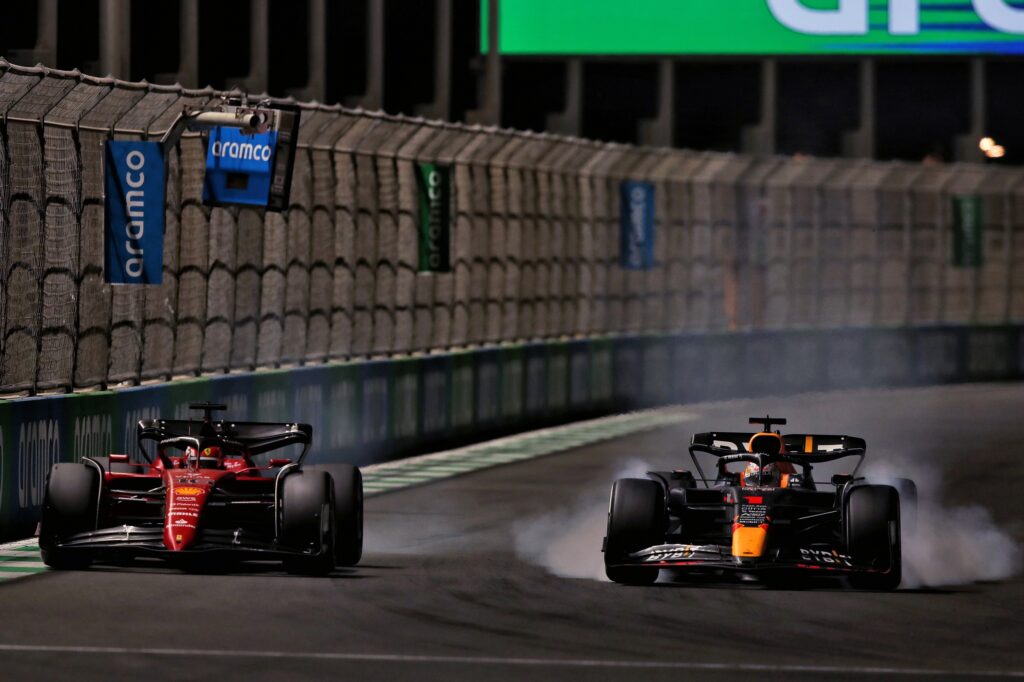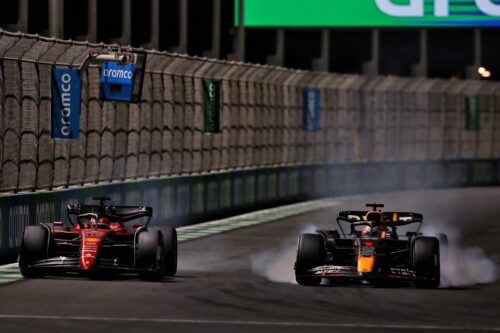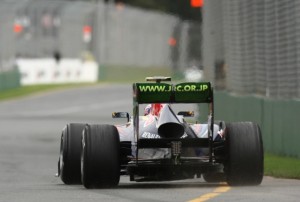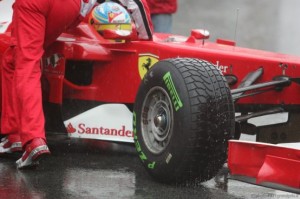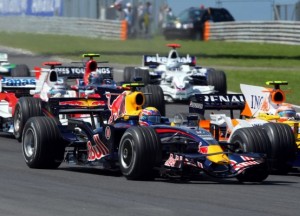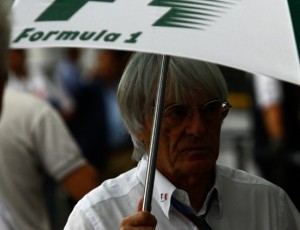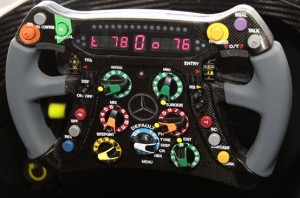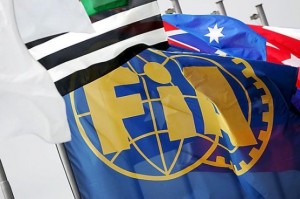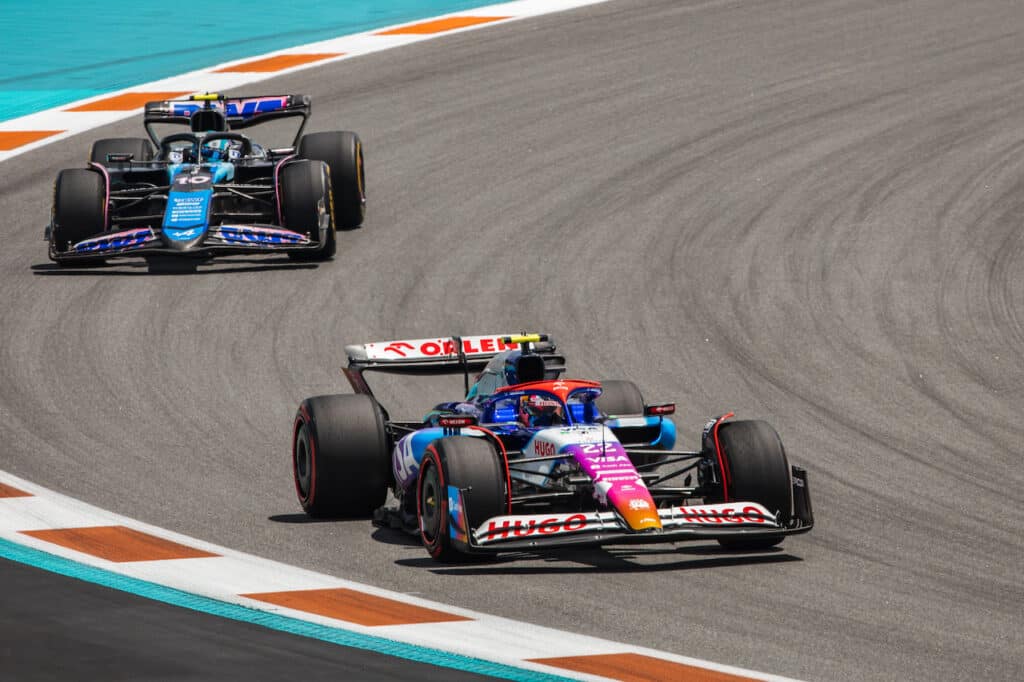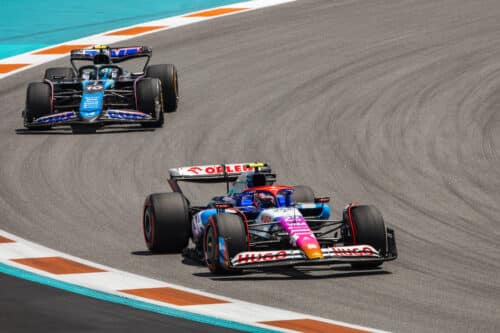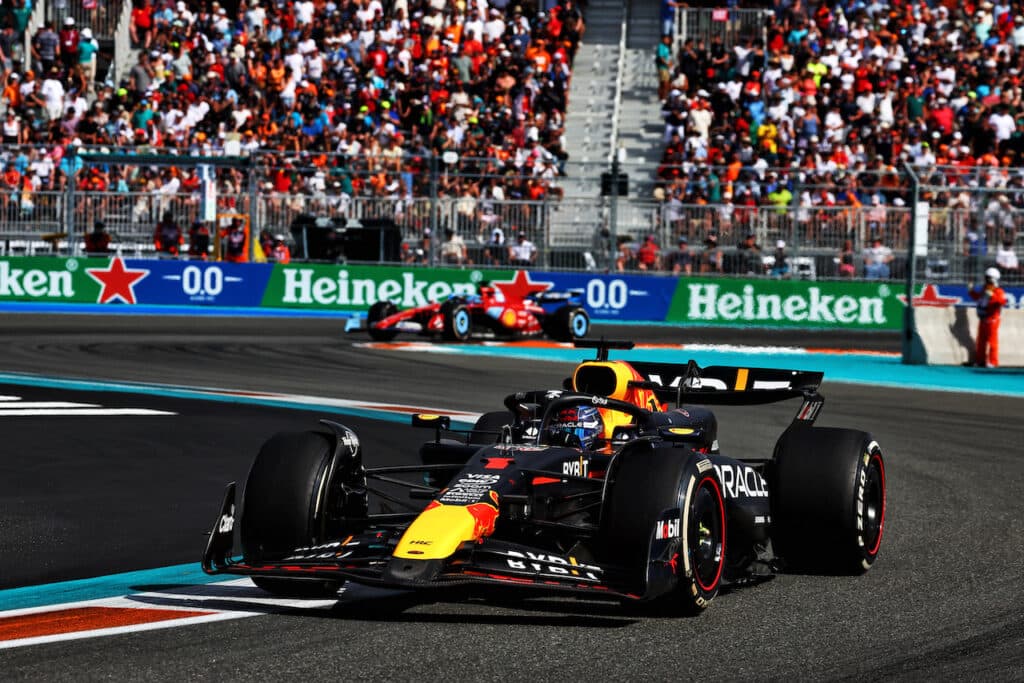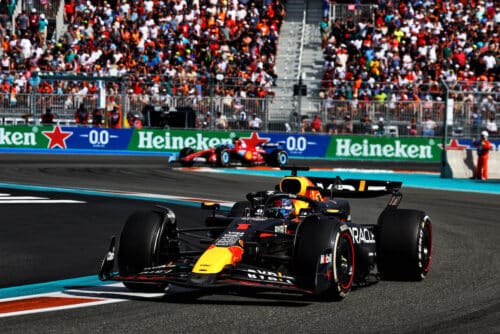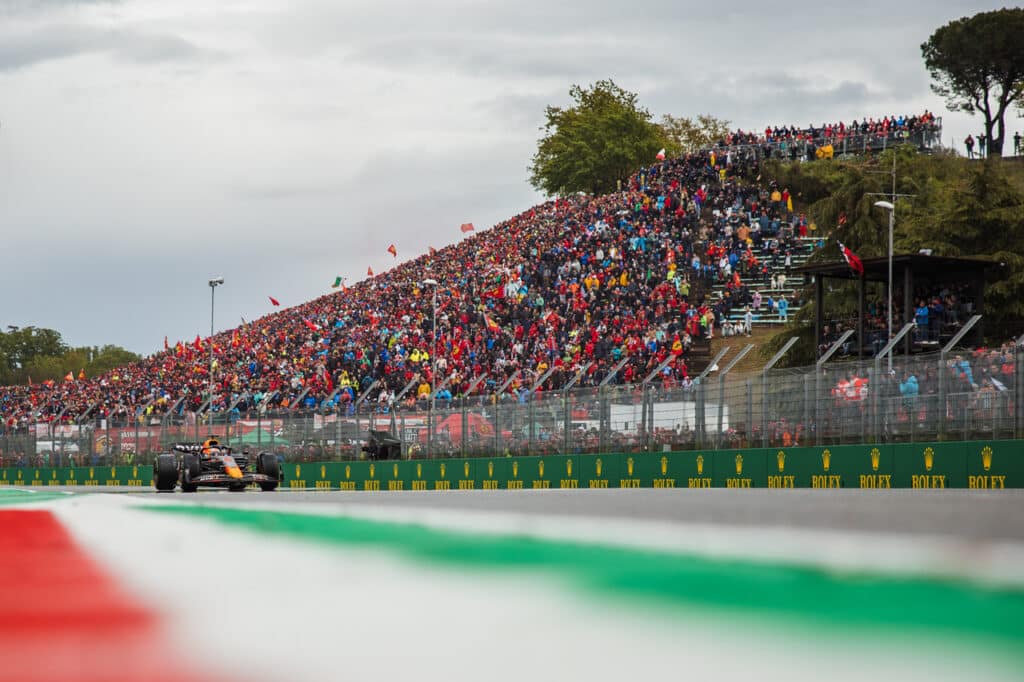The mobile rear wing: yet another madness from the FIA
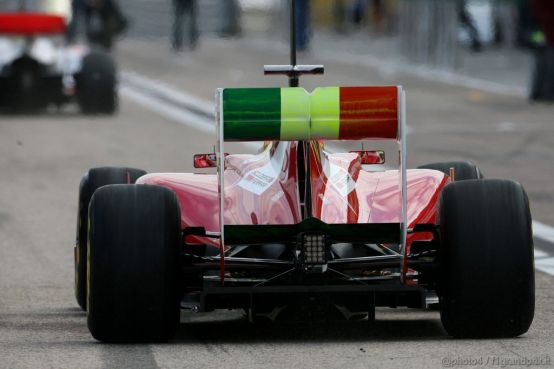
With this piece we want to act as a spokesperson for a general discontent, which is affecting historic Formula 1 fans year after year, who for the umpteenth time feel like this sport is losing its original connotation.
Vain hopes..
Frankly, we can't take it anymore. The rule on the rear mobile wing is the straw that will probably break the back of an already overflowing camel and for some already overflowed for some time.
It was hoped that, with the change in the Presidency of the Federation between Max Mosley and Jean Todt, something would have changed. Instead, Formula 1 now seems like a little game headed towards a dangerous tangent, contrary to the very spirit of this sport, to common sense rules, and contrary to what decades-long fans have seen until some time ago.
What we can't understand is how the 'big bosses' are continuing to address the issue of the spectacular nature of racing... without addressing it. Or rather, taking it at a distance without getting straight to the point.
The standardization imposed on components, tests and cars in general has created such a flattening of performance that, instead of increasing the spectacle, has drastically decreased it.
The big problem of recent years, we know, is that of overtaking on the track. We've been talking about it for a long time, yet instead of getting to the root of the problem (the turbulence left by the car in front of the one in the slipstream, too much electronics, etc), we try to find ways to remedy everything.
With this philosophy, the mobile wing follows the Kers, introduced in 2009 and already useless. And, given its uselessness, it came back into fashion in 2011.
Because it is at least obvious (not for everyone, it seems) that if everyone equips themselves with the same tool, the advantage is eliminated. Unless they are small teams, which Kers cannot afford and, therefore, remain even more penalized than they already are. Furthermore, it is no longer possible to test, so the disadvantage becomes double.
Kers apparently wasn't enough as a revolutionary idea, and so in 2011 the rear mobile wing was introduced to replace the front one of 2010. Last year's one included the possibility of adjusting the inclination of the wing from the steering wheel of the driver, to have more or less grip when cornering. The same operation (but automated) compared to what was done at the pit stops when the flap was adjusted directly with a screwdriver.
The application..
Let's start immediately with the mechanism, visible here in the version used new by the Sauber C30
The mechanism is as simple as it is unsportsmanlike. The chaser is given the opportunity to raise the flap, so as to gain speed and be able to attempt overtaking more easily. Those in front, however, must submit to this handicap, almost without being able to defend themselves.
The beauty of it all, however, is the possibility of applying this tool. The FIA, to make everything more 'fun' (in her opinion), has indicated the procedure methods.
During qualifying the flap can be adjusted as many times as you want, without limits. In the race, it will be prohibited in the first two laps from the start or in the lap following a hypothetical return of the Safety car. And it can also be here. The misfortune is the application in the other laps, i.e. in the normal course of the race.
The limits imposed are: 1) You can adjust the flap only once per lap, if (2) you are less than a second from the car in front and (3) in the last six hundred meters of the longest straight (probably the finish line ).
In all this, KERS is also added, so as not to miss anything.
The question arose spontaneously: how does the driver behind know that he is less than a second from the one in front? Answer: the distance between the two cars will be measured at the entrance to the last curve before the straight.
A practical example
Let's try to hypothesize a practical sequence. We have driver A and driver B. We are in Barcelona.
1) The two drivers take the last right bend with less than a second gap between them (let's imagine 7/8 tenths).
2) An indication appears on the steering wheel/display of pilot B, which informs him of the possibility of using the mobile flap.
3) Driver A activates the KERS when exiting the corner, and due to the elastic effect he moves 20/30 meters away from the driver following him, who in turn has activated the electric batteries from which he will therefore not gain any advantage (unless the person in front has Kers -> a car to lap).
4) We know that the Barcelona straight is quite long. The following pilot has been told he can use the flap but CANNOT yet do so. Because he has not yet reached the white line beyond which, in fact, he will be able to use the mobile wing. Great intuition, among other things, a transverse line placed at 600 meters while going at three hundred an hour.
5) We arrive at the fateful 600 meters from the entrance to the first fast chicane. Pilot A and Pilot B have exhausted the thrust of the Kers for a few seconds now (about 7 seconds). Pilot B activates the moving wing and begins to gain speed. At 300 km/h you travel about 80 meters per second. This means that, if he wants to overtake the person in front of him, driver B has approximately 7 seconds to approach, attempt to overtake and set the braking for the next corner. By touching the brakes, the wing will return to the standard configuration. Its use is, therefore, limited to around 4/5 seconds maximum at full acceleration, in which it will be difficult to get closer in a concrete way to whoever is in front, if this is at a distance between half a second and a second.
As you can see, therefore, it is not a given that those behind can exploit such a huge advantage as they want us to believe. We have hypothesized, among other things, the Barcelona straight. But let's think about the citizens: in Monte Carlo it means using Kers and wing at the same time between the guard rails.
What if a train is formed?
This 'revolutionary' idea will certainly lead to recriminations from the series 'B activated the wing before 600 metres', but we have another doubt.
If instead of two cars, a train of 4/5 paired single-seaters is formed, all less than a second from each other, who will correctly evaluate the use of the device?
Let's take the case of pilots A, B, C.
A, poor, can do nothing while B tries to overcome him. But what if C, at the same time, tries to overtake B, who in turn is overtaking A and therefore has the active wing? C could complain by saying that B activated the wing to defend himself from being overtaken, while B would defend himself by saying that he was actually using it not to defend himself, but to overtake A. A similar disaster doesn't even happen in driving school courses when teaching the sequence of steps in intersections. Let us therefore prepare ourselves for a beautiful season of appeals and counter-appeals.
And where is the security?
For 15 years the Federation has been drilling the ears of the entire circus with the issue of safety. The standards on single-seaters have been raised to very high levels (and we all agree on this), we race in the desert, with kilometre-long escape routes in asphalt but without spectators in the stands. Paradoxically, however, we go racing in Monte Carlo, Singapore and Valencia, where there aren't many escape routes and we still run 2 centimeters from the guard rails. The F-duct innovation was abolished because it was deemed too dangerous. In fact, the pilot had to release his grip on the steering wheel with one hand to close the stall duct on the rear wing. It's a shame that now the distraction is double, between Kers and the mobile wing followed by his indications, LEDs, white lines, etc. Furthermore, if we are talking about cost reduction, an automatic F-duct would not have cost as much as the development of the Kers.
Regarding the rear mobile wing, we just want to put forward a hypothesis that we hope will never come to pass. That is, when braking, the flap does not return to its standard configuration due to a defect or problem. Wouldn't this be a danger for those behind the wheel who believe they have a certain load when braking and would find it halved? With the possibility, moreover, of ending up off the track or, even worse, inadvertently creating a collision?
And be careful, even in normal conditions it will be difficult to manage braking with a single-seater that drops suddenly (due to the load returning to 'standard' level) on the rear once you touch the brakes. Maybe while overtaking.
Too many contradictions
In short, the more time passes the more the FIA doesn't seem to understand anything anymore. Every year the regulation is revised, new features are introduced, but the track always speaks clearly when faced with artificial solutions that have nothing to do with sport. The mobile wing, then, may also bring advantages, but it is the spirit with which it was introduced (that of the handicap for those who are chased) that makes no sporting sense. Even if this path doesn't bring benefits to the show, we don't want to imagine what 2012 would have in store for us.
Concluding
Fortunately, for such insipid regulations, this beginning of 2011 has revealed many innovations on a technical level. Just this morning Mclaren did not deny itself, revealing an innovative single-seater. Unpublished solutions as we have seen on Lotus-Renault, on Toro Rosso, on Williams. A sign of awakening among the teams, who perhaps (like the enthusiasts) can no longer stand useless standardization and an FIA that continues to take the wrong paths. Let's hope they give away a GPS to Paris.
We are polite and don't want to exaggerate, but remember what Rag said. Fantozzi about the Battleship Potemkin? Here you are.
Alessandro Secchi
F1Grandprix.it
if you want to always be updated on our news
Follow us here
